Youtube & Chill
(it’s a trap)
David Benqué
Speculative Interfaces
IMPAKT Festival 2019

Covington, P., Adams, J. and Sargin, E. (2016) ‘Deep Neural Networks for YouTube Recommendations’, in Proceedings of the 10th ACM Conference on Recommender Systems. Boston, MA, USA: ACM (RecSys ’16), pp. 191–198. doi: 10.1145/2959100.2959190.
a user-friendly interface that maintains the perception of choice but also directs the viewer toward content more likely to keep them engaged and subscribed
Arnold, S. (2016) ‘Netflix and the Myth of Choice/Participation/Autonomy’, in McDonald, K. and Smith-Rowsey, D. (eds) The Netflix Effect: Technology and Entertainment in the 21st Century. Bloomsbury Publishing USA.
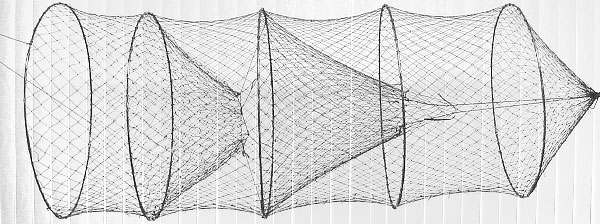
Seaver, N. (2018) ‘Captivating algorithms: Recommender systems as traps’, Journal of Material Culture, p. 1—16. doi: 10.1177/1359183518820366.
image: Nets & More
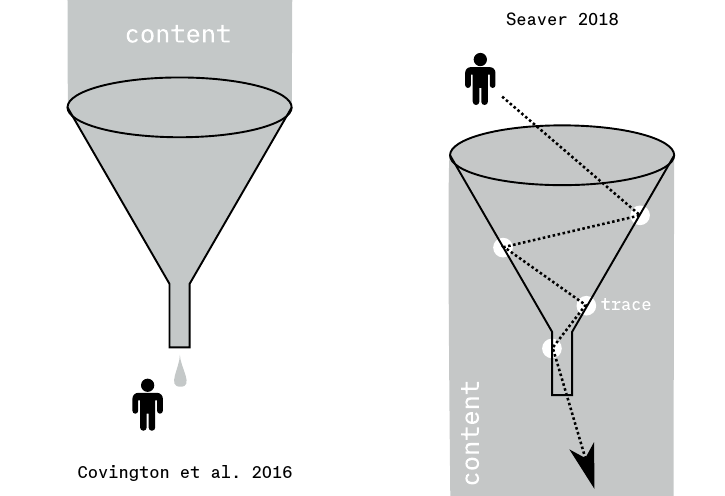
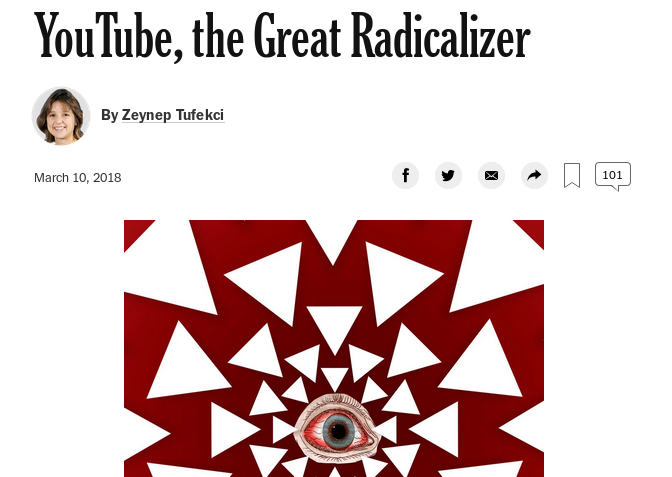
Tufekci, Z. (2018) ‘YouTube, the Great Radicalizer’, The New York Times. Available at: https://www.nytimes.com/2018/03/10/opinion/sunday/youtube-politics-radical.html (Accessed: 1 October 2018).
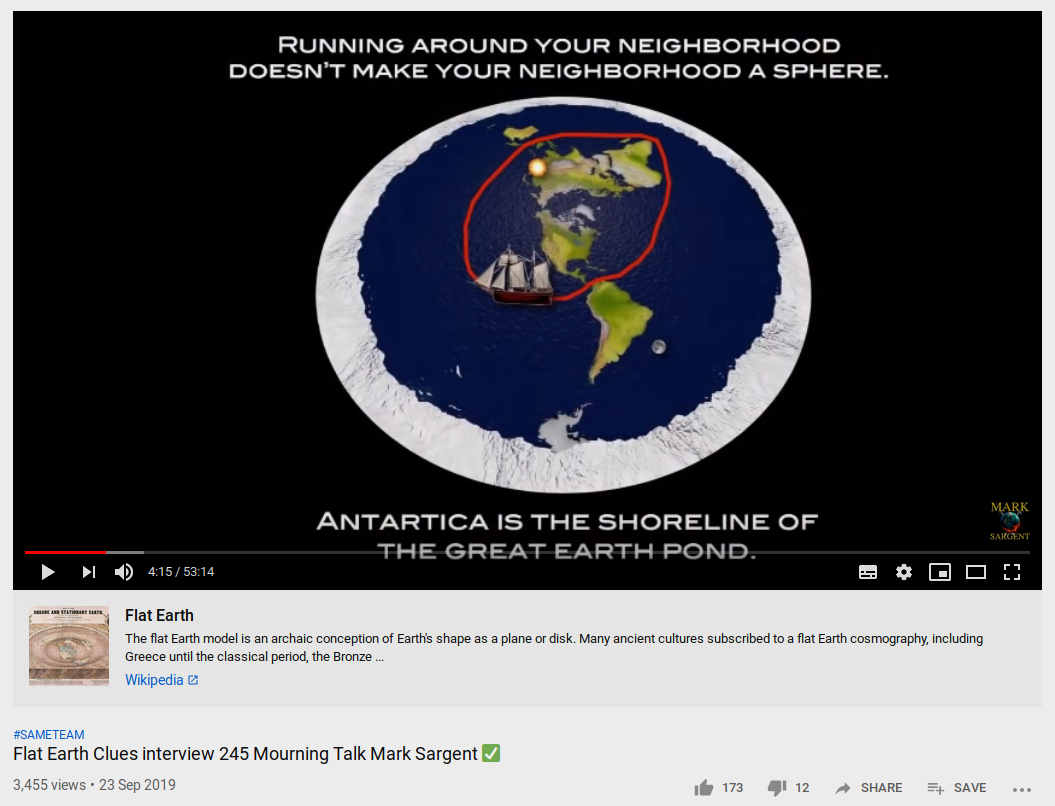
Landrum, A. (2019) ‘YouTube as the Primary Propagator of Flat Earth Philosophy’, in Symposium at the American Association for the Advancement of Science (AAAS). Washington, D.C. Available at: http://www.asheleylandrum.com/uploads/4/7/8/3/47833717/landrum_2019_02.18_aaas_online.pdf.
Paolillo, J. C. (2018) ‘The Flat Earth phenomenon on YouTube’, First Monday, 23(12). doi: 10.5210/fm.v23i12.8251.
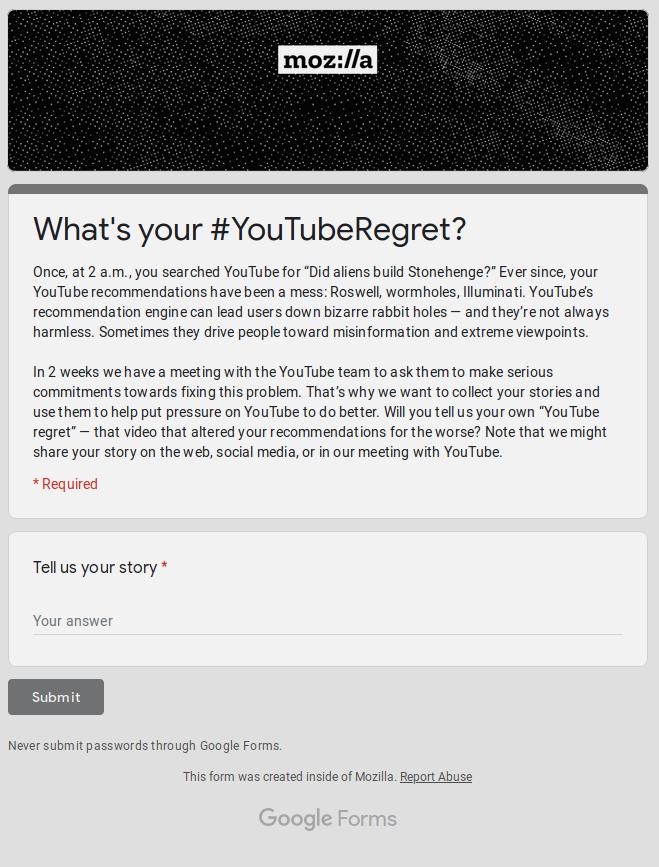
#YouTubeRegret, Mozilla

Roose, K. (2019) ‘The Making of a YouTube Radical’, The New York Times. Available at: https://www.nytimes.com/interactive/2019/06/08/technology/youtube-radical.html (Accessed: 12 July 2019).

Chaslot, G. (2016) ‘Youtube-explore’. Available at: https://github.com/pnbt/youtube-explore (Accessed: 17 October 2018).
‘the world’s first window into YouTube’s opaque recommendation engine’
Lewis, P. and McCormick, E. (2018) ‘How an ex-YouTube insider investigated its secret algorithm’, The Guardian. Available at: https://www.theguardian.com/technology/2018/feb/02/youtube-algorithm-election-clinton-trump-guillaume-chaslot (Accessed: 1 October 2018).
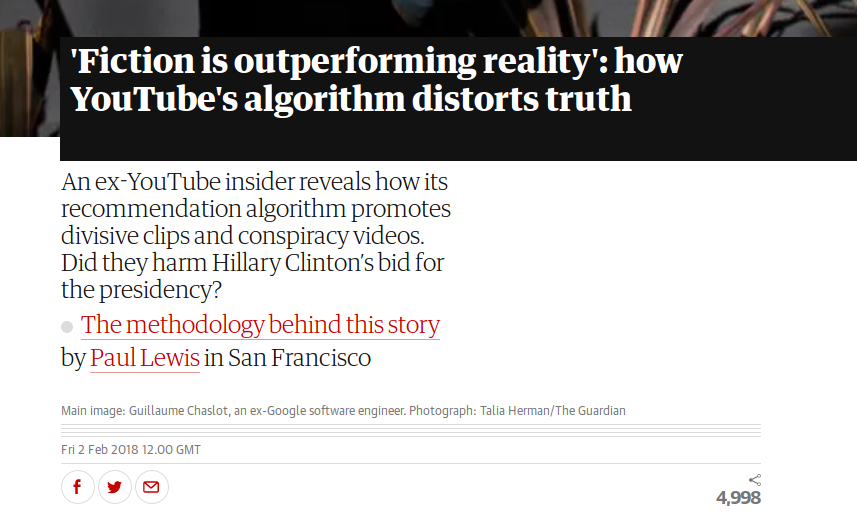
Lewis, P. (2018) ‘’Fiction is outperforming reality’: How YouTube’s algorithm distorts truth’, The Guardian. Available at: https://www.theguardian.com/technology/2018/feb/02/how-youtubes-algorithm-distorts-truth (Accessed: 17 October 2018).
SEEING ≠ KNOWING
Ananny, M. and Crawford, K. (2016) ‘Seeing without knowing: Limitations of the transparency ideal and its application to algorithmic accountability’, New Media & Society, pp. 1–17. doi: 10.1177/1461444816676645.
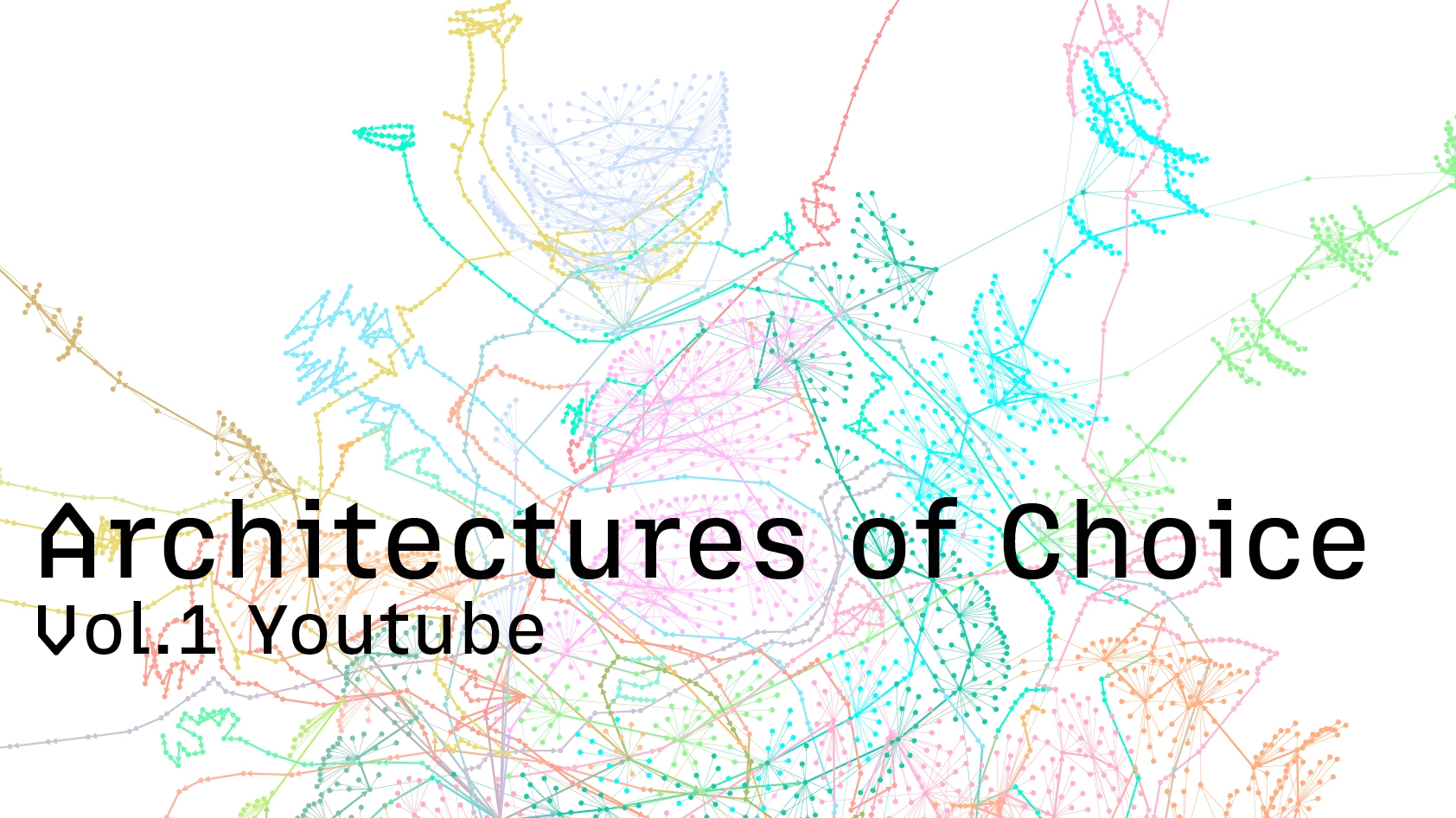
https://davidbenque.com/projects/architectures-of-choice/


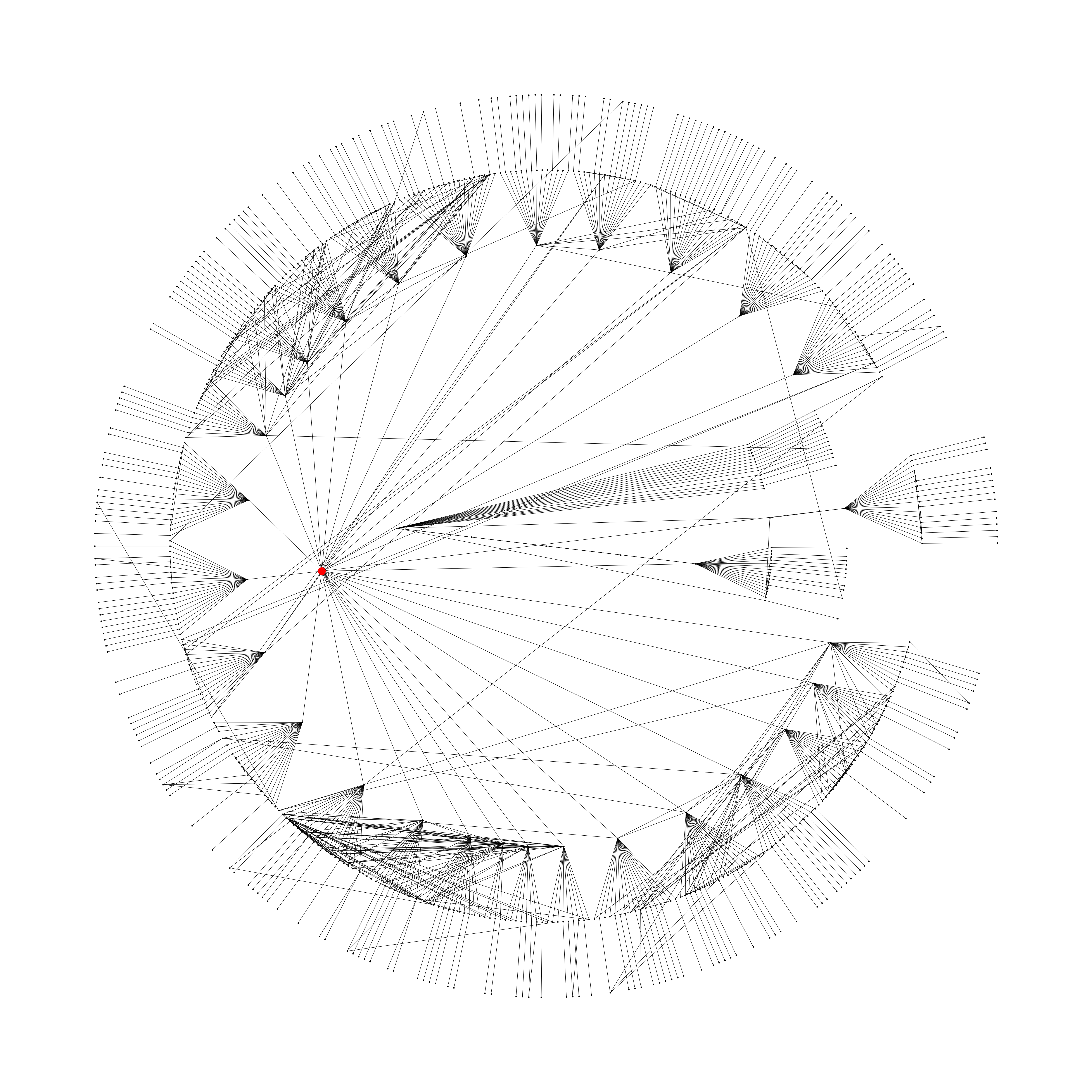
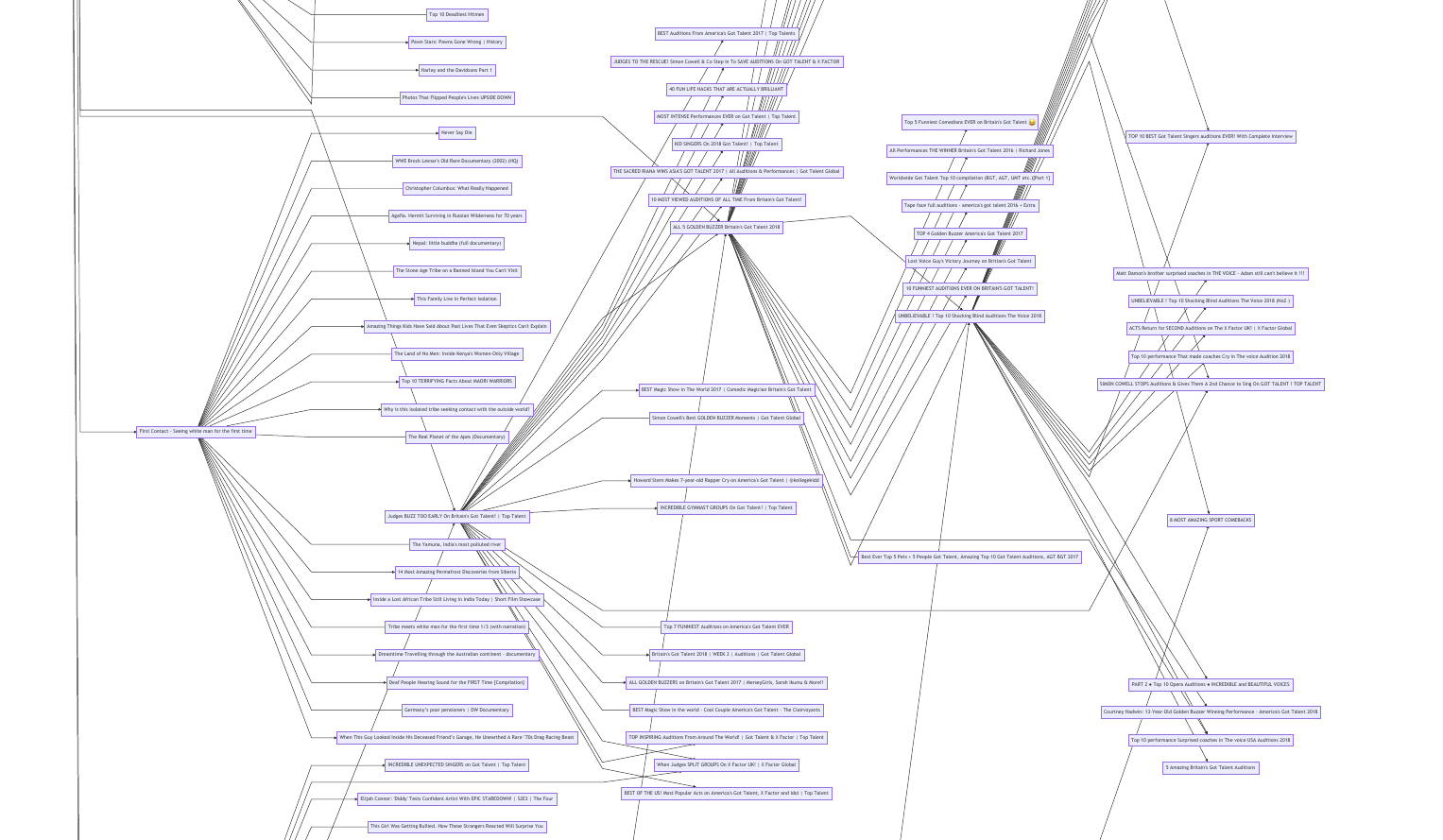

I challenge the authors to pull out 1 single compelling path of content, so I can map this global diagrammatic contouring, with what actually matters to ME, the USER.
— Reviewer 1
[hunters] by interpreting a series of traces, reconstruct the appearance of an animal they have never seen
Ginzburg, C. (1980) ‘Morelli, Freud and Sherlock Holmes: Clues and Scientific Method’, History Workshop, 9, pp. 5–36. Available at: www.jstor.org/stable/4288283.

Fluo-Green project, Université de Namur
https://sites.google.com/site/fluogproject/
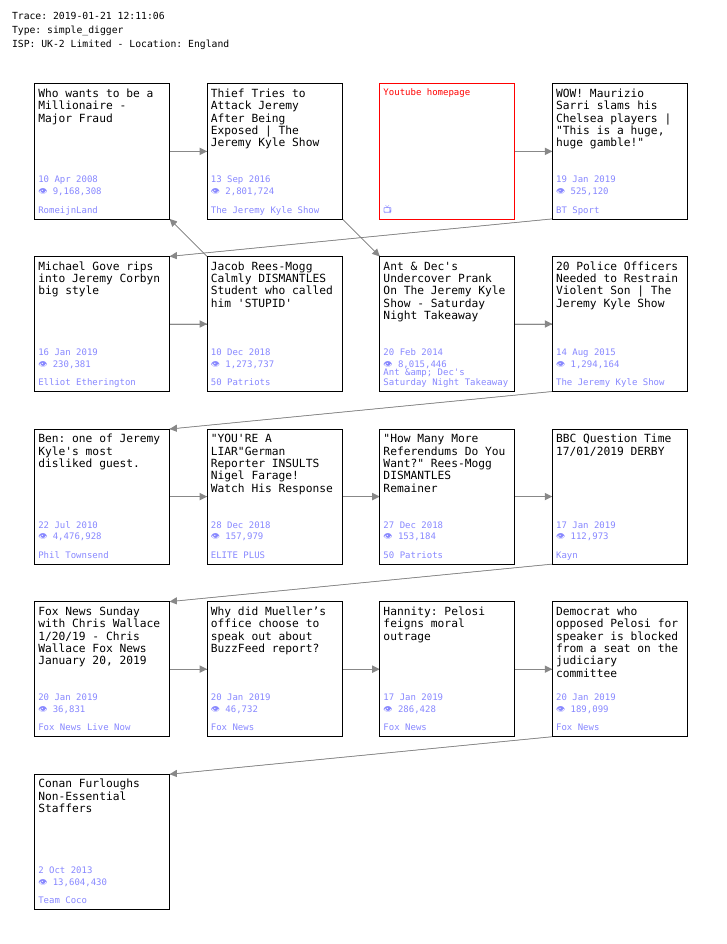
Marenko, B. (2018) ‘How to Speculate: AI and the FutureCrafting of the Algorithmic Imagination’, in DRS2018 [NOT ACCEPTED].
dat://yt-trace.davidbenque.com
↳ Open in Beaker
Browser
↳ Turn on live-reloading ⚡
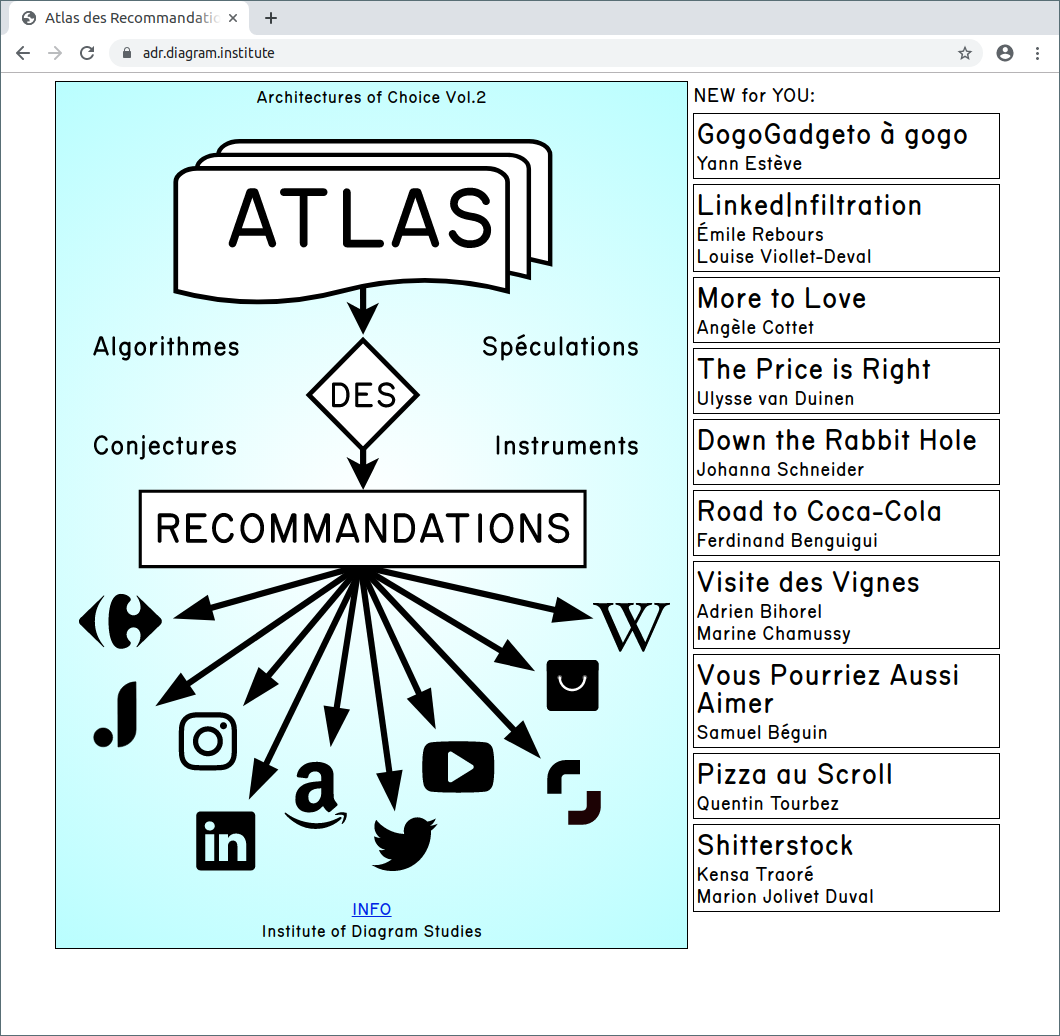
https://adr.diagram.institute
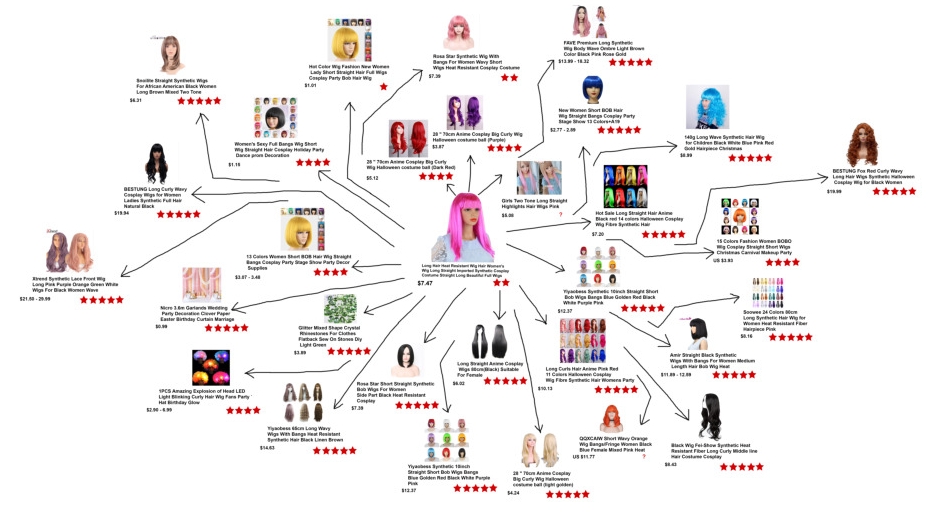
More to Love, Angèle Cottet, AliExpress
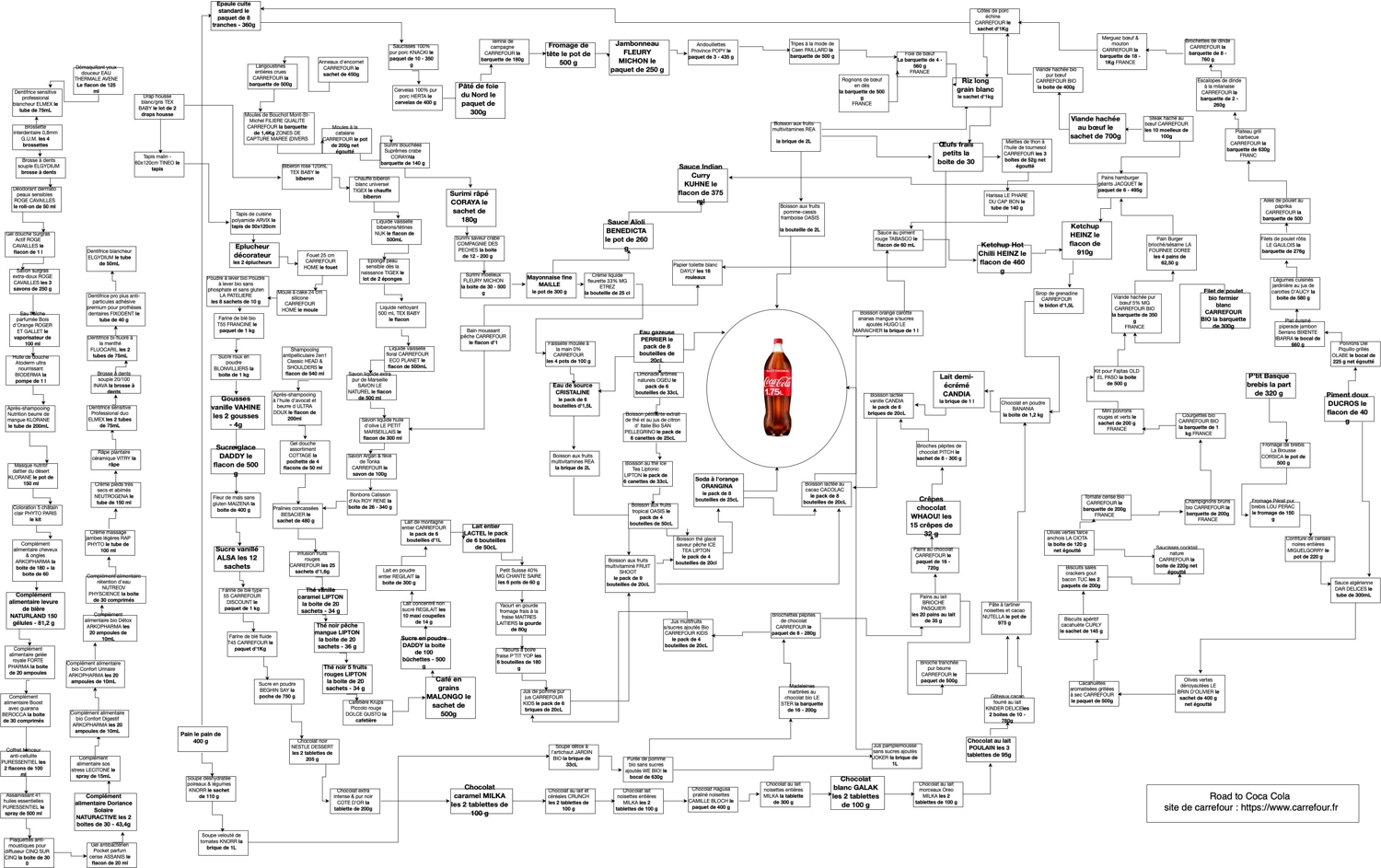
Road to Coca-Cola, Ferdinand Benguigui, Carrefour
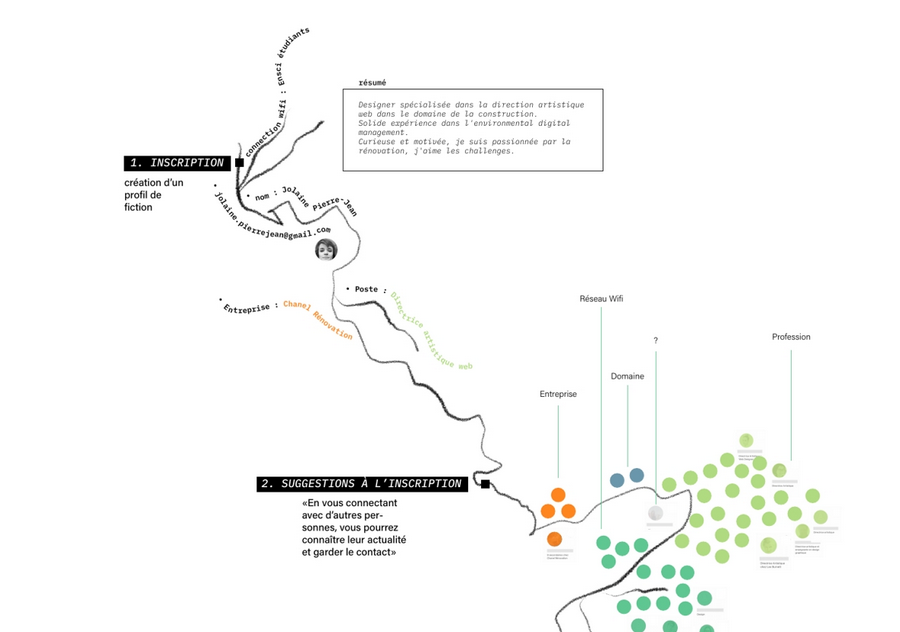
Linked|nfiltration, Émile Rebours & Louise Viollet-Deval, Linkedin
Post-API methods
Spotify Teardown is, in part, a book about method: how does one study someone who doesn’t want to be studied and (unlike Spotify’s users) has the power to enforce that wish?
James, R. (2019) ‘Financial Music’, American Book Review, 40(6), pp. 13–14. doi: 10.1353/abr.2019.0116.
see also: Digital Methods Initiative (2019) ‘Post-API Research? On the contemporary study of social media data’, Digital Methods Initiative. Available at: https://wiki.digitalmethods.net/Dmi/WinterSchool2020 (Accessed: 10 October 2019).
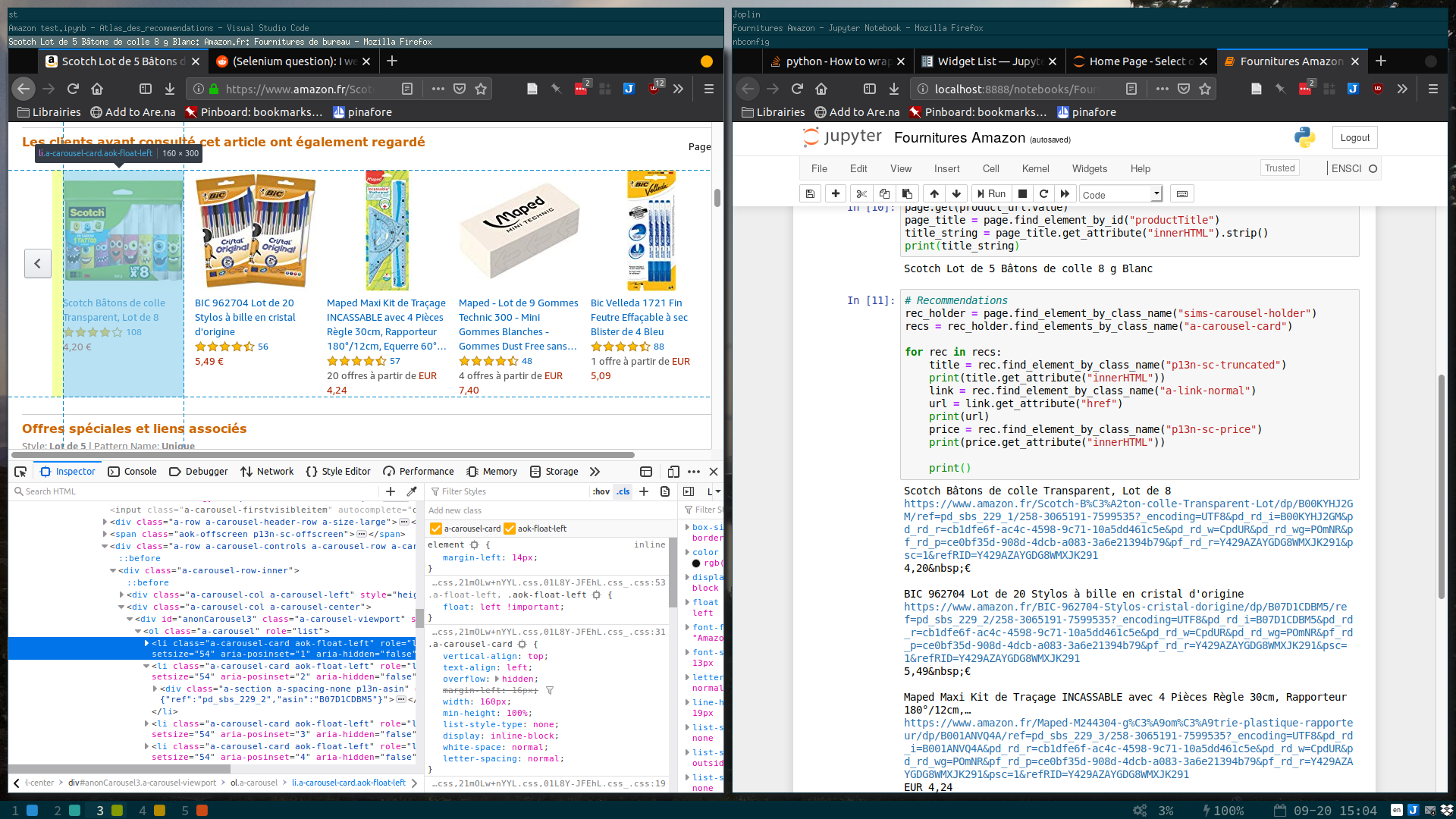
To be caught at this speed is not to be dead, rather it is to be enclosed, known, and subject to manipulation. […] But to be caught at this speed is also to be hosted—to be provided with conditions for existence that facilitate activity while constraining it.
Seaver, N. (2018) ‘Captivating algorithms: Recommender systems as traps’, Journal of Material Culture, p. 1—16. doi: 10.1177/1359183518820366., emphasis added
The question to ask of traps may not be how to escape from them, but rather how to recapture them and turn them to new ends in the service of new worlds.
Seaver, N. (2018) ‘Captivating algorithms: Recommender systems as traps’, Journal of Material Culture, p. 1—16. doi: 10.1177/1359183518820366.
FIN
David Benqué
davidbenque.com
@davidbenque
@air_pump@post.lurk.org

icons: forkaweso.me
font: Operator, Hoeffler & Co.